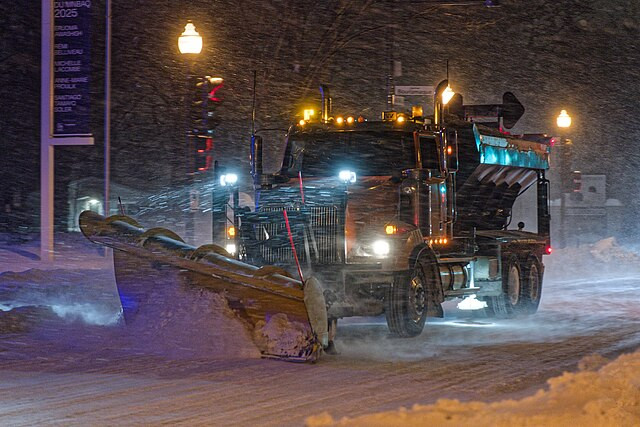A powerful winter storm swept across the United States over the weekend, leaving at least 10 people dead, inundating roads with historic flooding, and causing widespread power outages across multiple states. The storm, which battered the South and moved into the Northeast, triggered emergency declarations, forced evacuations, and knocked out electricity for hundreds of thousands of residents.
In Kentucky, at least nine people died, including a child, as floodwaters surged through towns and highways. "We just confirmed another weather-related death out of Pike County, bringing our total loss to nine people," Kentucky Governor Andy Beshear announced Sunday. He warned that the toll could rise as search and rescue operations continue, with emergency crews having already performed more than 1,000 rescues in under 24 hours. This is "one of the most serious weather events we've dealt with in at least a decade," Beshear added.
Water levels reached record highs in parts of Kentucky, a state still recovering from devastating floods two years ago that killed 43 people. Beshear described the flooding as "massive," citing mudslides, road closures, and stranded residents. He urged people to avoid travel, warning that "hundreds of roads" remained underwater or impassable. The storm's impact was widespread, stretching from heavy snowfall in the western part of the state to torrential rain and landslides in the east.
The Federal Emergency Management Agency (FEMA) has deployed teams to Kentucky to assist in recovery efforts. President Donald Trump approved a federal disaster declaration, unlocking emergency relief funds for affected areas. "We need Kentuckians to remain alert," Beshear said, emphasizing that additional river flooding could persist for days.
Beyond Kentucky, the storm battered the South with high winds and torrential rain. In Georgia, a person died after a tree collapsed onto a home in Atlanta during a severe thunderstorm, Atlanta Fire Rescue Captain Scott Powell confirmed. In Tennessee, more than 50 nursing home residents were evacuated in Macon County due to rising floodwaters. West Virginia and Virginia also experienced extensive flooding, with swift-water rescues occurring throughout the night.
The intense storm system caused significant power outages across multiple states. As of Sunday afternoon, more than 100,000 customers in Georgia were without electricity, along with 75,000 in Alabama, 61,000 in West Virginia, and tens of thousands in Virginia and Kentucky. The storm also disrupted water supplies, with nearly 10,000 homes in Kentucky losing water service and another 21,000 under boil-water advisories.
In Virginia, Governor Glenn Youngkin submitted an expedited disaster request to President Trump, citing "significant damage that is affecting community lifelines." This marks the fifth major flood event to strike parts of the state in the past five years. The National Guard has been deployed in Virginia to assist with rescues and recovery.
The storm system also produced tornadoes and damaging winds. In Alabama, an EF-1 tornado was confirmed in Hale County, causing structural damage to homes and downing trees and power lines. In Tuscumbia, Alabama, the storm tore roofs off buildings, including a middle school, and left the downtown area littered with debris. "There is a lot of damage downtown," Mayor William Foster said, noting that emergency crews were using drones to assess the destruction.
As the storm moved north, it brought significant snowfall to the Northeast and Great Lakes regions. More than 10 million people remain under winter storm warnings, with heavy snow expected from upstate New York to northern Maine. Forecasts predict that snowfall totals in some areas could reach nearly two feet, with strong winds creating hazardous whiteout conditions. Parts of Michigan and Vermont are expecting accumulations between 6 and 12 inches, while cities like Portland, Maine, and Burlington, Vermont, are bracing for travel disruptions.
The storm has also created treacherous road conditions across the country. Michigan State Police reported more than 100 crashes in the Detroit area since snowfall began Saturday, warning that icy roads remain a major hazard. In Colorado, authorities reported eight fatalities in vehicle crashes since Valentine's Day, with three state patrol cruisers struck by cars skidding on ice.
Adding to the challenges, a major polar vortex is expected to grip the northern U.S. in the coming days, bringing life-threatening cold temperatures. The National Weather Service warned that parts of Montana and North Dakota could experience wind chills as low as -60 degrees Fahrenheit. The Arctic blast is forecast to extend across the Great Plains and into the Midwest, exacerbating already dangerous travel conditions.
As recovery efforts begin, officials warn that the situation remains dangerous, particularly in flood-prone areas. The Weather Prediction Center issued a rare Level 4 flood risk warning for parts of Kentucky and Tennessee, noting that events of this magnitude occur on fewer than 4% of days annually but account for more than 80% of flood-related damage. In response to the crisis, West Virginia Governor Patrick Morrisey declared a state of emergency in 10 counties, mobilizing rescue crews and emergency responders.
Even as the storm weakens, its effects will continue to be felt. Rising rivers could lead to additional flooding, power outages may persist for days, and icy conditions will make travel difficult. In Kentucky, emergency shelters remain open in nine counties, with officials urging residents to take precautions.






